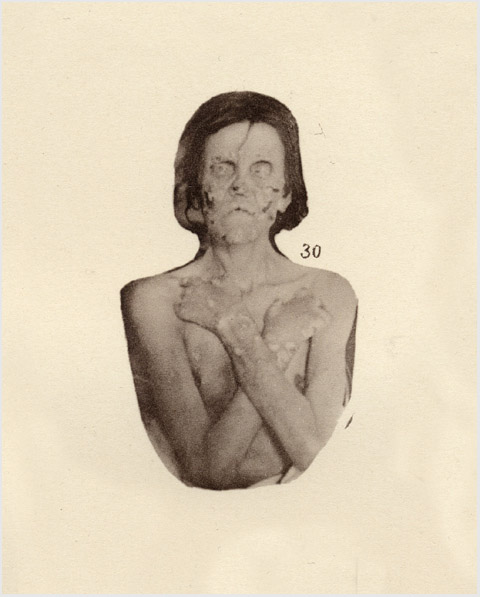
Journal : Analele Institutului de Patologie si de Bacteriologie ; vol. 1.
Bucuresci : Imprimeria Statului, 1889.
Description : 432-446 p. (romanian) 446-467 p. (french), [5 l.] pl. ; ill.: 33 photolith. figs., 1 litho. ; 31 cm.
Photograph : 4 photolithograph leaves, composites.
Subject : Leprosy — Geographical distribution ; Dx.
Notes :

Louis Pasteur and Jules-François Joubert (1834-1910) are credited with the first general theory of antibiosis – la vie empêché la vie. Babes, however, came to reject Pasteurs's explanation of the antibiotic phenomenon as a competition for nutritive substances after he established evidence of microbial secretive antagonisms. This discovery led to the precepts of antibiotherapy which he published with André-Victor Cornil (1837-1908), the first textbook on bacteriology. That same year Arnoldo Cantani (1837–1893) conducted the first clinical experiment of bacteriotherapy on a 42 year-old woman with a cavitary tuberculosis, treating her with inhalations of a culture of Bacterium termo in dilute beef broth and liquified gelatin. In 1890 at a conference in Berlin, Robert Koch announced that he had found a cure for tuberculosis derived from glycerine extract of tubercle bacilli (tuberculin) and medical scientists around the world immediately began their own clinical trials of "Koch's lymph." Most of these experiments involved patients who were desperate for a cure, but a few scientists also tested the serum on lupus patients, hoping to prove that the scrofulous form of the disease was caused by tuberculosis, a widely held belief at the time.
Babes had acquired a deep understanding of both leprosy and tuberculosis from research undertaken immediately after Koch discovered the tubercles bacillus in 1882. He published several papers on the two diseases in 1883 but one paper in particular titled, Étude comparative sur les bacilles de la tuberculose et de la lèpre, examined the histopathological similarities between tuberculosis and leprosy. It was not crazy logic to think that Koch's lymph, if it could cure tuberculosis, then it might also act as an antibiotic agent against leprosy. Motivated by Koch's cure, Babes's first clinical experiments in antibiotherapy were conducted with Dr. Kalindero and reported in 1891 in a paper titled, Résultats obtenus par les injections de lymphe de Koch dans les différentes formes de lèpre (Revue de médecine, xi, 817-842). The two scientists treated 11 lepers with Koch's lymph and observed slight improvements in localized symptoms after three months of treatment. They also reported the restoration of the voice of one of their patients, but all beneficial effects of the serum gradually dissipated.
Both Babes and Kalindero continued their research into leprosy, publishing independently, and Babes became a member of the International Committee for Leprosy Control. His other accomplishments in medical science are too numerous to list here. Babes was founder of the Analele Institutului de Patologie. Most of the composite figures are photographic reproductions of water color or ink wash drawings that were copied from photographs, only a few are actual photographs.
